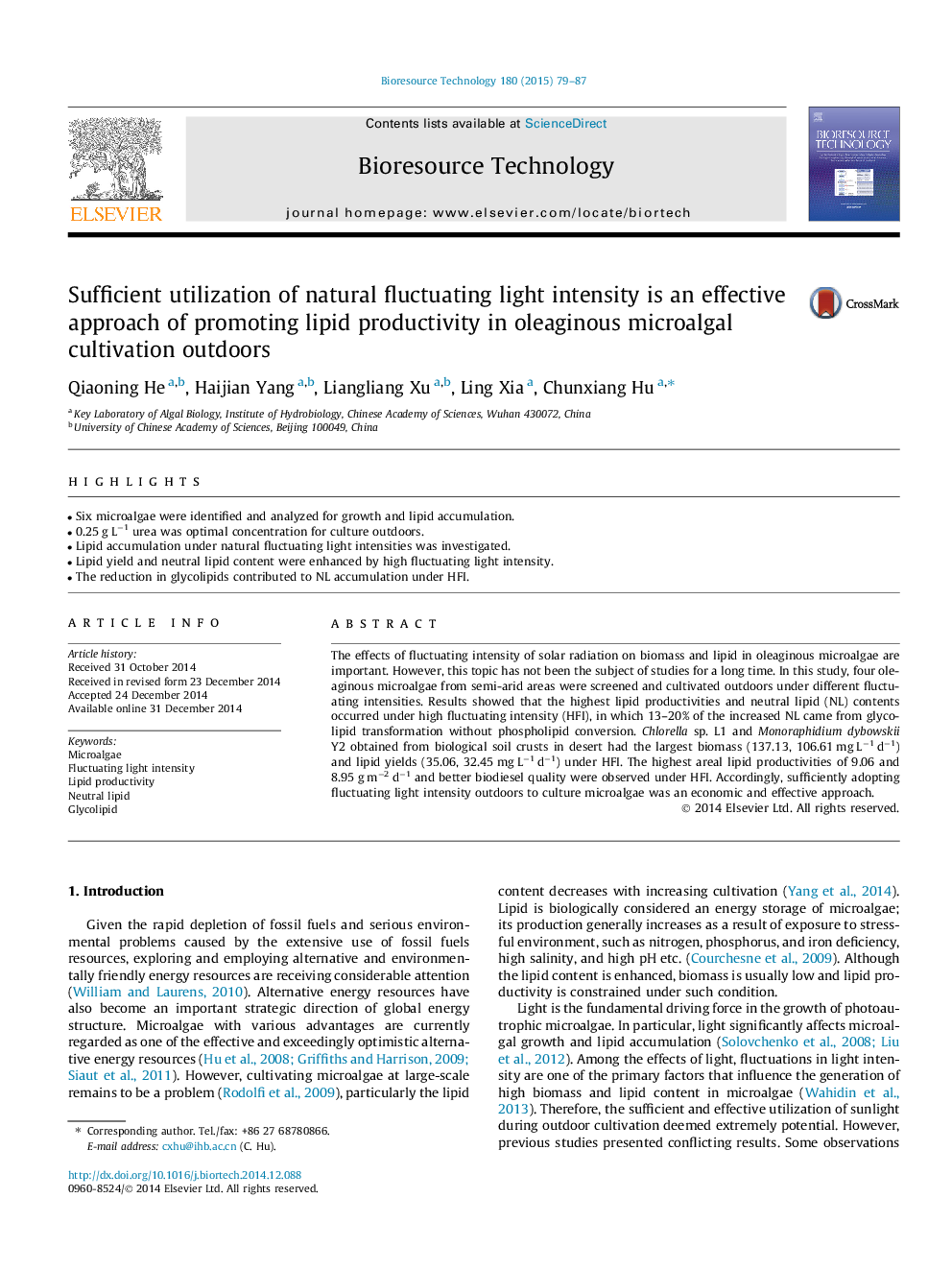| Article ID | Journal | Published Year | Pages | File Type |
|---|---|---|---|---|
| 680040 | Bioresource Technology | 2015 | 9 Pages |
•Six microalgae were identified and analyzed for growth and lipid accumulation.•0.25 g L−1 urea was optimal concentration for culture outdoors.•Lipid accumulation under natural fluctuating light intensities was investigated.•Lipid yield and neutral lipid content were enhanced by high fluctuating light intensity.•The reduction in glycolipids contributed to NL accumulation under HFI.
The effects of fluctuating intensity of solar radiation on biomass and lipid in oleaginous microalgae are important. However, this topic has not been the subject of studies for a long time. In this study, four oleaginous microalgae from semi-arid areas were screened and cultivated outdoors under different fluctuating intensities. Results showed that the highest lipid productivities and neutral lipid (NL) contents occurred under high fluctuating intensity (HFI), in which 13–20% of the increased NL came from glycolipid transformation without phospholipid conversion. Chlorella sp. L1 and Monoraphidium dybowskii Y2 obtained from biological soil crusts in desert had the largest biomass (137.13, 106.61 mg L−1 d−1) and lipid yields (35.06, 32.45 mg L−1 d−1) under HFI. The highest areal lipid productivities of 9.06 and 8.95 g m−2 d−1 and better biodiesel quality were observed under HFI. Accordingly, sufficiently adopting fluctuating light intensity outdoors to culture microalgae was an economic and effective approach.
